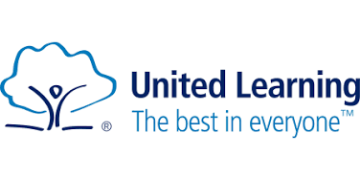Building children’s vocabularies opens doors to harder, more rewarding curriculums and lifelong learning, writes Alex Quigley, but it needs careful focus
We know that talk is a well-established solution for developing children’s vocabulary. The daily lives of the “word rich” are characterised by lots of talk around the dinner table, alongside debate and discussion in the classroom. The opposite is of course true, and many children are disadvantaged by a lack of talk.
Surprisingly though, a small number of words predominate in our daily talk. Around 2,000 words make up 80 per cent of our spoken language. This is important. If we simply encourage talk in the classroom, without a structured approach to academic language, it will not develop children’s language.
If we know what words are in daily use, we can help our students improve their speech with the academic vocabulary that sets them apart for success beyond the school gates.
That being said, oracy alone is insufficient. Conversations are bound to here-and-now contexts, using a relatively small number of simple words, whereas reading books opens up experience with language that is considerably more sophisticated.
Without ignoring the tremendous – indeed, essential – value of oracy, we should be clear: the future success of all of our students rests predominantly on their ability to become proficient and fluent readers. Their capacity to learn and enjoy learning is bound inexorably to their reading skill. If they can read it, they can say it. If they can say it with confidence, it provides them a key to success for their future beyond school.
Rich, structured talk is a solution to closing the vocabulary gap in our classroom. If this is twinned with high-quality reading instruction, then we are well on the way to helping children thrive with any curriculum.
If we want a school-leaver to have something like 50,000 words, it’s a daunting task
If we can align, encourage and guide a structured approach to wider reading alongside a focus on oracy, with both being wedded to direct instruction of academic vocabulary and reading, this opens up the potential for a bigger, harder curriculum.
This approach should offer independent word-learning strategies, so that children can read successfully when they encounter new words. These strategies are of huge value for lifelong learning far beyond the school gates.
It is the core business of every teacher not just to understand how children learn to read, but also how they read to learn.
Supporting children to read more is vital to helping them grow their vocabulary, but we need to ensure that we teach better reading and don’t rely solely on pleasure.
We should encourage children to read broadly for pleasure, while immersing them in word-rich classrooms which focus on vocabulary development.
Explicitly teaching vocabulary can enrich knowledge and understanding of the world, and it’s a useful proxy for a great deal of general knowledge in a range of subject domains.
We must give our students the necessary tools to develop their vocabulary independently. If we want a school-leaver to have something like 50,000 words, it’s a daunting task. But we can close the gap: by explicitly teaching a mere few hundred words well in the classroom, children grow their vocabulary exponentially by learning the related word families and having more tools to read independently with success. Children can go on to learn around 3,000 to 4,000 words annually. Year upon year of such growth sees the 50,000 figure become achievable for each child we teach.
Attention to developing vocabulary should become a part of school planning. We can take the following steps:
1 Train teachers to become more knowledgeable and confident in explicit vocabulary teaching.
2 Teach academic vocabulary explicitly and clearly, with coherent planning throughout the curriculum.
3 Foster structured reading opportunities in a model that supports students with vocabulary deficits.
4 Promote and scaffold high-quality academic talk in the classroom.
5 Promote and scaffold high-quality academic writing in the classroom.
6 Foster “word consciousness” in our students (e.g. sharing the etymology and morphology of words).
7 Teach students independent word learning strategies.
Alex Quigley is an English teacher and director of Huntington Research School. He is also the author of ‘Closing the Vocabulary Gap‘.






Your thoughts